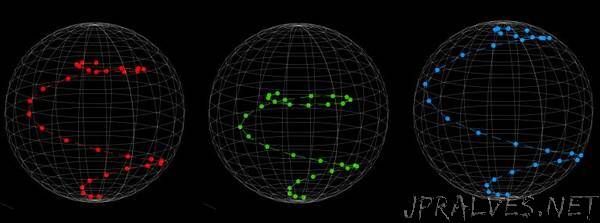
“Conventional wisdom holds that two wrongs don’t make a right. However counter intuitive this may seem, many wrongs could be the key to improving the performance of noisy quantum computers today.
The problem
Computers that rely on the power of quantum mechanical phenomena to perform calculations are also extremely susceptible to “noise” from their environment – which leads to errors in the computation. Even at the extreme cold temperatures of a dilution refrigerator where the quantum processors operate, our physical computing elements, superconducting qubits, have coherence times on the order of a few hundred microseconds at best, which sets the timescales over which quantum information is lost. While a major challenge to advancing quantum computers today involves increasing these qubit coherence times, the end goal is to build a fully fault tolerant quantum computer capable of detecting and correcting errors. However, these architectures are likely several years away.
In a new research paper, published in Nature, entitled “Error mitigation extends the computational reach of a noisy quantum processor,” we demonstrate a way to improve the accuracy of quantum computations on today’s noisy hardware. We show that repeating the computation at varying levels of noise lets us estimate what the quantum computer would calculate in the absence of noise. To do this involves a bit of a “stretch” – the microwave pulses used to perform quantum operations on the qubits are stretched in time in order to controllably amplify the noise.
“The error mitigation technique dubbed ‘zero-noise extrapolation’ is readily accessible for existing quantum computers since it doesn’t require any additional hardware modifications.”
Longer computations
Computations on noisy quantum hardware are limited by the competition between decoherence and circuit depth, a measure of the number of sequential operations performed on the processor. Increasing circuit depth can help create more complex quantum states, and in the context of chemistry simulation, this may allow for a better representation of the energy states of the molecules considered. However, increasing circuit depth on a noisy quantum computer typically implies increased errors from decoherence. However, with the technique developed in this work, our ability to mitigate the effect of decoherence enables us to access more complex and accurate computations that benefit from increased circuit depth.
General-purpose technique
Our method is fairly broad in its applicability and can be used to improve any quantum computation that relies on expectation values. For example, in this work, we use it to demonstrate improvements in the accuracy of quantum simulations initially considered in our 2017 Nature study “Hardware-efficient variational quantum eigensolver for small molecules and quantum magnets.” Using up to four qubits of our 5-qubit superconducting processor, we compute the lowest energy state of the molecules H2 and LiH, as well as archetypal spin models in solid-state physics. The error mitigation technique was also employed to enhance the success of binary classification in the recent paper “Supervised learning with quantum enhanced feature spaces,” which was featured on the March 14 cover of Nature.
The path ahead
While our technique enabled computational accuracies that were otherwise inaccessible to the hardware, it is important to note that the improvements are not indefinite and are ultimately limited by the coherence properties of the processor. As we march towards systems with increasing Quantum Volume, improved coherence, quantum control, and circuit compilation will all contribute to extending the reach to even longer quantum circuits with more qubits.”
